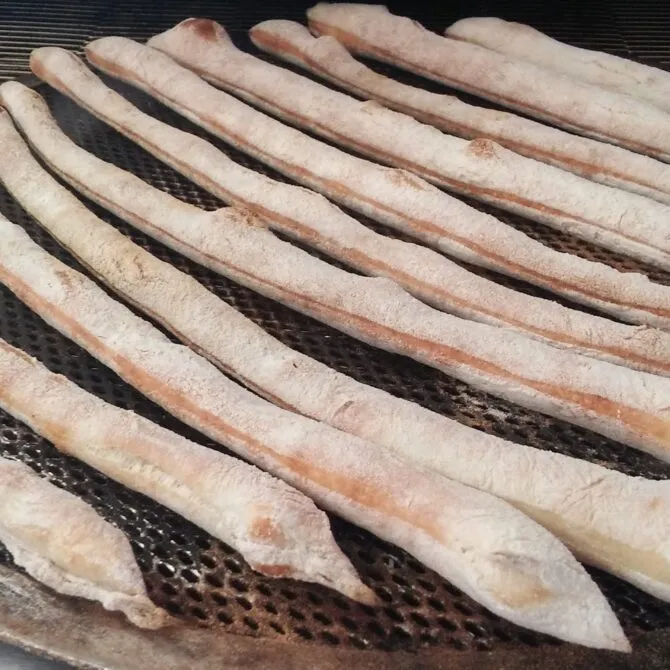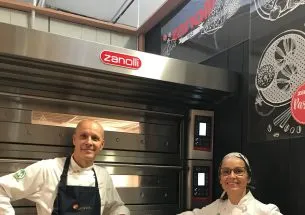
Zanolli asked Federico De Silvestri, owner of the Pizzeria Focacceria Quattrocento of Marzana (VR), what in his opinion are the main challenges and opportunities presented by the attention on reducing waste and consumption. Let’s explore this important issue with Discovery.
What measures can you take in a pizzeria with the ingredients to avoid or reduce waste?
Federico De Silvestri: For fresh products (vegetables, cheese) I suggest you buy a little at a time. Buy a little and more often to avoid having to throw away what is not used. Always pay attention to the expiration dates, and favour longer deadlines. And observe the FIFO (First In First Out) principle for stock, so shorter maturity ingredients are always at your fingertips. It is also important to train staff to these principles, which is not always easy. Much waste comes from carelessness and superficiality.
What can you recycle? Unused balls of pizza dough must be thrown away?
FDS: For some fresh ingredients, reuse is difficult. While for the unused dough balls of pizza, even ‘burst’ ones, can be used to make bread, buns, breadsticks…
Can freezing the products help? Which ones? Does the quality remain the same?
FDS: Freezing foods helps because, if done correctly, it lengthens the life of some products. Vacuum packing may already stretch the duration of some products such as cheese by a couple of days. With blast chilling and freezing you considerably lengthen lifespan and also preserve taste well. Doughs and mozzarella can be frozen too. There are ways to significantly reduce wastage, the important thing is to take care and fully comply with the cold chain.
For ovens and equipment, what advice can you give to maximise energy savings?
FDS: With respect to the past, today’s ovens typically consume less. The passage from wood to electric has allowed savings on costs and consumption, in addition to ensuring greater hygiene in cooking. If you are using an electric or gas-fired oven, I recommend getting the oven to the temperature in a gradual manner, avoiding urgent power peaks. Fully coat the cooking chamber with refractory material may further reduce consumption because the refractory material tends to store the heat.
There are additional refinements to setting the oven?
FDS: I suggest you open the oven as little as possible during cooking. Place the oven away from cold spots, draughts, extraction sources. It is also very important to constantly clean the oven: this reduces wear and allows all the components to operate smoothly.
Can you use the concept of zero km in a pizzeria?
FDS: The sensitivity toward local ingredients to seasonal production is spreading from the kitchen to the pizzeria, along with the growing fame of gourmet pizza. To stand apart with the title of ‘gourmet’, a pizza must have characteristics of particular quality both in the dough and in the filling.
I like to add value to the local traditional Veronese products such as the tastasal, through my pizzas. But I like to also offer the choice of products from other local traditions (anchovies, bresaola), always top quality, but not from the region. It is difficult to find a pizza chef that chooses to confine him/herself to only using local ingredients.
Is there an advanced recovery chain for edible but old or expired food in the pizzeria world?
FDS: It is not easy, current hygiene regulations do not allow freely selling surplus food to third parties. We need to formalise the transfer. Charities, for example, can make a receipt for food from the operator, a safeguard in case of checks. Normally the restaurants must always invoice the products they give away, controls and the respective measures can be very severe. For this reason, giving away unsold food can only be through a traceable path. Unused vegetables are often thrown away, that’s why it is better to buy in small amounts.
Is there a tendency for pizza makers to share ideas and successful methods against waste?
FDS: When you get on well with other pizza makers and share the sensitivity of these topics certainly there is discussion, dialogue and transmission of ideas.
Attention to reducing waste and to respecting the environment can also be an economic benefit or for the pizza maker is it easier and less onerous to use ordinary methods?
FDS: I have to say that, except in rare cases, there is a tendency to save and earn more at the expense of careful production to avoid waste and product origin. If the ingredient is cheap, there are less scruples to throwing it away. Alternatives to disposable plastics are not widely available and are relatively expensive. In this case, certain choices really affect the budget. Also zero Km ingredients paradoxically sometimes are more expensive. It is still an individual ethical choice that certainly entails obstacles, but also recognition and appreciation on the part of consumers. You should always verify there is also substance behind the ‘green’ propaganda, it is not always the case …

Zanolli asked Federico De Silvestri, owner of the Pizzeria Focacceria Quattrocento of Marzana (VR), what in his opinion are the main challenges and opportunities presented by the attention on reducing waste and consumption. Let’s explore this important issue with Discovery.
What measures can you take in a pizzeria with the ingredients to avoid or reduce waste?
Federico De Silvestri: For fresh products (vegetables, cheese) I suggest you buy a little at a time. Buy a little and more often to avoid having to throw away what is not used. Always pay attention to the expiration dates, and favour longer deadlines. And observe the FIFO (First In First Out) principle for stock, so shorter maturity ingredients are always at your fingertips. It is also important to train staff to these principles, which is not always easy. Much waste comes from carelessness and superficiality.
What can you recycle? Unused balls of pizza dough must be thrown away?
FDS: For some fresh ingredients, reuse is difficult. While for the unused dough balls of pizza, even ‘burst’ ones, can be used to make bread, buns, breadsticks…
Can freezing the products help? Which ones? Does the quality remain the same?
FDS: Freezing foods helps because, if done correctly, it lengthens the life of some products. Vacuum packing may already stretch the duration of some products such as cheese by a couple of days. With blast chilling and freezing you considerably lengthen lifespan and also preserve taste well. Doughs and mozzarella can be frozen too. There are ways to significantly reduce wastage, the important thing is to take care and fully comply with the cold chain.
For ovens and equipment, what advice can you give to maximise energy savings?
FDS: With respect to the past, today’s ovens typically consume less. The passage from wood to electric has allowed savings on costs and consumption, in addition to ensuring greater hygiene in cooking. If you are using an electric or gas-fired oven, I recommend getting the oven to the temperature in a gradual manner, avoiding urgent power peaks. Fully coat the cooking chamber with refractory material may further reduce consumption because the refractory material tends to store the heat.
There are additional refinements to setting the oven?
FDS: I suggest you open the oven as little as possible during cooking. Place the oven away from cold spots, draughts, extraction sources. It is also very important to constantly clean the oven: this reduces wear and allows all the components to operate smoothly.
Can you use the concept of zero km in a pizzeria?
FDS: The sensitivity toward local ingredients to seasonal production is spreading from the kitchen to the pizzeria, along with the growing fame of gourmet pizza. To stand apart with the title of ‘gourmet’, a pizza must have characteristics of particular quality both in the dough and in the filling.
I like to add value to the local traditional Veronese products such as the tastasal, through my pizzas. But I like to also offer the choice of products from other local traditions (anchovies, bresaola), always top quality, but not from the region. It is difficult to find a pizza chef that chooses to confine him/herself to only using local ingredients.
Is there an advanced recovery chain for edible but old or expired food in the pizzeria world?
FDS: It is not easy, current hygiene regulations do not allow freely selling surplus food to third parties. We need to formalise the transfer. Charities, for example, can make a receipt for food from the operator, a safeguard in case of checks. Normally the restaurants must always invoice the products they give away, controls and the respective measures can be very severe. For this reason, giving away unsold food can only be through a traceable path. Unused vegetables are often thrown away, that’s why it is better to buy in small amounts.
Is there a tendency for pizza makers to share ideas and successful methods against waste?
FDS: When you get on well with other pizza makers and share the sensitivity of these topics certainly there is discussion, dialogue and transmission of ideas.
Attention to reducing waste and to respecting the environment can also be an economic benefit or for the pizza maker is it easier and less onerous to use ordinary methods?
FDS: I have to say that, except in rare cases, there is a tendency to save and earn more at the expense of careful production to avoid waste and product origin. If the ingredient is cheap, there are less scruples to throwing it away. Alternatives to disposable plastics are not widely available and are relatively expensive. In this case, certain choices really affect the budget. Also zero Km ingredients paradoxically sometimes are more expensive. It is still an individual ethical choice that certainly entails obstacles, but also recognition and appreciation on the part of consumers. You should always verify there is also substance behind the ‘green’ propaganda, it is not always the case …
You might also be interested in...





